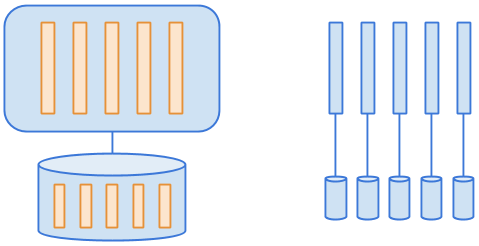Multitenancy was and still is an incredibly popular as well as the successful architectural pattern of the last years. However, that is likely to transform with the development of cloud computing.
I keep in mind well the time when hardware was pricey as well as anxious to obtain. Awaiting weeks or even months to receive a brand-new server I necessarily needed yesterday.

Annoying documents, unpleasant negotiations, hard-to-get authorizations, and also high priced. It held discomfort to be avoided if possible.. Multitenancy is an architectural pattern that comes exactly from these circumstances.
The concept is quite straightforward: deploy and also run a single system supporting multiple customers. The sources are shared, including a new client fast as well as easy. Yet, naturally, as every little thing in software architecture, multitenancy has many compromises.
The most significant one is a lot of additional intricacies. Tenant isolation should be made sure on every system degree from configurations to Data. This is not a basic job. The code should understand it on all layers, which makes also basic points quite complicated with a negative effect on performance.
With rising numbers of renters, scalability can quickly come to be a concern as well.
Cloud computing as the enabler of DevOps, infrastructure automatization as well as containerization altered the standard hardware provisioning. Nowadays, it is feasible to spin up a new server, develop a new database, or set up a brand-new service bus within a second or even much less. Say goodbye to request tickets to an IT department! Hardware provisioning in the cloud ended up being quick and simple, supplying an option for the issue multitenancy originally addressed.
Multi- vs Single-Tenancy
Compare a single multi-tenant system with multiple single-tenant systems:

In his book Cloud Strategy, Gregor Hohpe compares these two approaches to apartment building vs. single-family homes. Such a psychological version assists us to comprehend the distinctions in the strategies.
Development
It is most definitely way basic to project a single-family home as opposed to a large apartment. This is the major downside of multi-tenant systems as multitenancy aspects leak deep right into the structure and bring terrific complexity which slows development down as well as makes it more expensive and also stressful.
Building and Deployment
Having a construction strategy and structure product ought to mean no large difference in the building procedure. However, large apartment buildings tend to be distinct as well as constructed ad hoc and also unsystematic with task changes as well as changes during the construction work, while tiny family houses are uniform making them a perfect match for automatization of the building process. Automatization of everything is an essential mindset-shift extremely motivated by cloud services.
Maintenance
If you ever lived in an apartment building, you understand just how difficult as well as expensive an accident can be. Old big structures often tend to stand up to modification while cottages are easy to be rebuilt from the ground. Discovering a bug, applying a new feature, data migration, a style or functionality modification, those tasks are really hard in complex systems.
Efficiency and Scalability
While single-family houses can be constructed promptly and also quickly on demand, intending an apartment must take into consideration the wanted amount of renters beforehand: when your house is only half inhabited it’s really ineffective to be run, the home heating, elevator, lighting must still be cared for and so forth. An additional difficulty comes when the ability is surpassed. Multi-tenant systems are based on vertical scaling with its well-known limitations.
Even adopting straight scaling could be problematic with multi-tenant systems: Think about an extreme case where a feature is executed as a serverless function (Function-as-a-Service). Because every little thing in a multi-tenant system is shared, constraints and also limits are shared too. A serverless feature allows for example one thousand simultaneous executions per second. With one hundred occupants accommodated in the system, it makes theoretically only ten implementations per second for a tenant, which could be simply inadequate.
Operations and Management
It is probably easier to manage one structure consisting of one thousand apartments than to deal with one thousand small houses. To fit a renter right into an existing house will be constantly easier than to build a new house for him. Depend upon discipline as well as the maturity of the automatization process. As the multiple single-tenant techniques relocate the multi-tenant complexity from development to operations, demands on the system administrators can expand. The secret here is a good automatization of actually whatever as well as embracing the DevOps way of thinking: divide the job among dev and ops individuals, bring them together and share the responsibility for the item within the group.
Conclusion
Cloud computer doesn’t suggest the guaranteed end of the multitenancy architectural pattern, yet it does offer a different option with a promise of reducing initiative in development by changing the complexity right into operations. This is not imaginable without fully grown automatization and tidy team duty. Yet, there are valid use-cases for multitenancy in addition to there are valid use-cases for computing outside the cloud.
Satisfied accommodating!

